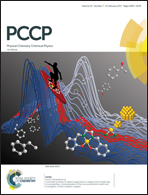Polylogarithmic equilibrium treatment of molecular aggregation and critical concentrations
Abstract
A full equilibrium treatment of molecular aggregation is presented for prototypes of 1D and 3D aggregates, with and without nucleation. By skipping complex kinetic parameters like aggregate size-dependent diffusion, the equilibrium treatment allows us to predict directly time-independent quantities such as critical concentrations. The relationships between the macroscopic equilibrium constants for different paths are first established by statistical corrections and so as to comply with the detailed balance constraints imposed by nucleation, and the composition of the mixture resulting from homogeneous aggregation is then analyzed using a polylogarithmic function. Several critical concentrations are distinguished: the residual monomer concentration at equilibrium (RMC) and the critical nucleation concentration (CNC), which is the threshold concentration of total subunits necessary for initiating aggregation. When increasing the concentration of total subunits, the RMC converges more strongly to its asymptotic value, the equilibrium constant of depolymerization, for 3D aggregates and in the case of nucleation. The CNC moderately depends on the number of subunits in the nucleus, but sharply increases with the difference between the equilibrium constants of polymerization and nucleation. As the RMC and CNC can be numerically but not analytically determined, ansatz equations connecting them to thermodynamic parameters are proposed.



 Please wait while we load your content...
Please wait while we load your content...